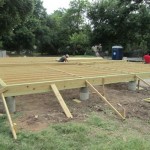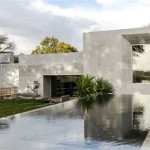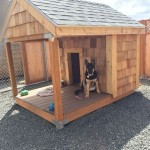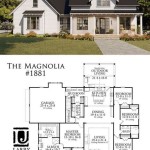Unique floor plans for small houses are non-traditional designs that maximize the use of limited space while creating visually appealing and functional living environments. These plans often incorporate innovative layouts, smart storage solutions, and multifunctional spaces to accommodate the needs of homeowners living in compact dwellings.
Small houses are becoming increasingly popular due to rising housing costs, shrinking lot sizes, and a growing desire for sustainable living. However, designing a small house that is both comfortable and stylish can be a challenge. Unique floor plans offer a solution to this problem by breaking away from conventional layouts and embracing creativity in space planning.
In this article, we will explore different types of unique floor plans for small houses, discuss their advantages and disadvantages, and provide tips for choosing the right plan for your needs.
When designing unique floor plans for small houses, it is important to consider the following points:
- Maximize natural light
- Create open and airy spaces
- Incorporate multifunctional furniture
- Utilize vertical space
- Consider outdoor living areas
- Prioritize storage solutions
- Choose flexible layouts
- Focus on energy efficiency
- Consider future needs
By keeping these points in mind, you can create a unique and functional floor plan for your small house that meets your specific needs and lifestyle.
Maximize natural light
Natural light can make a small house feel more spacious and inviting. There are several ways to maximize natural light in your floor plan:
- Use large windows and skylights. Large windows and skylights allow more natural light to enter the home. Place them in areas where you want to create a bright and airy atmosphere, such as the living room, kitchen, and bedrooms.
- Orient your house to take advantage of the sun. If possible, orient your house so that the main living areas face south. This will allow you to take advantage of the sun’s warmth and natural light throughout the day.
- Use light-colored paint and finishes. Light-colored paint and finishes reflect light, making a space feel brighter and larger. Avoid using dark colors, which can absorb light and make a space feel smaller.
- Use mirrors to reflect light. Mirrors can reflect light around a room, making it feel brighter and more spacious. Place mirrors opposite windows or in areas where there is limited natural light.
By maximizing natural light in your small house, you can create a more comfortable and inviting living space.
Create open and airy spaces
Open and airy spaces make a small house feel more spacious and inviting. There are several ways to create open and airy spaces in your floor plan:
- Use an open floor plan. An open floor plan is a layout in which the main living areas (kitchen, dining room, and living room) are not separated by walls. This creates a more spacious and.Use large windows and doors. Large windows and doors allow more natural light to enter the home and create a more open and airy feeling. Place them in areas where you want to create a bright and inviting atmosphere, such as the living room, kitchen, and bedrooms.
- Use light-colored paint and finishes. Light-colored paint and finishes reflect light, making a space feel brighter and larger. Avoid using dark colors, which can absorb light and make a space feel smaller.
- Use furniture that is small-scale and light-colored. Small-scale and light-colored furniture will make a space feel more open and airy. Avoid using large, dark pieces of furniture, which can make a space feel cramped and closed-in.
By creating open and airy spaces in your small house, you can make it feel more spacious and inviting.
In addition to the tips above, you can also use the following techniques to create open and airy spaces in your small house:
- Use built-in storage. Built-in storage can help to keep your belongings organized and out of sight, making a space feel more open and airy. Consider using built-in shelves, cabinets, and drawers to maximize storage space.
- Declutter your home. Clutter can make a small house feel even smaller. Take some time to declutter your home and get rid of anything you don’t need. This will help to create a more open and airy atmosphere.
- Use mirrors to reflect light. Mirrors can reflect light around a room, making it feel brighter and more spacious. Place mirrors opposite windows or in areas where there is limited natural light.
By following these tips, you can create a small house that is both stylish and functional.
Incorporate multifunctional furniture
Multifunctional furniture is a great way to save space and make your small house more functional. Here are a few ideas for incorporating multifunctional furniture into your floor plan:
- Use a sofa bed. A sofa bed is a great way to add extra sleeping space to your home without taking up too much room. Choose a sofa bed with a comfortable mattress and a style that matches your dcor.
- Use a coffee table with storage. A coffee table with storage is a great way to keep your living room tidy and organized. Choose a coffee table with drawers or shelves where you can store books, magazines, and other items.
- Use an ottoman with storage. An ottoman with storage is a great way to add extra seating and storage to your home. Choose an ottoman with a lid that can be lifted up to reveal a storage compartment.
- Use a headboard with storage. A headboard with storage is a great way to add extra storage to your bedroom without taking up too much space. Choose a headboard with shelves or drawers where you can store books, magazines, and other items.
By incorporating multifunctional furniture into your floor plan, you can make your small house more functional and stylish.
Utilize vertical space
One of the best ways to maximize space in a small house is to utilize vertical space. Here are a few ideas for incorporating vertical space into your floor plan:
- Use taller furniture. Taller furniture, such as bookcases, cabinets, and shelves, can help you to maximize storage space without taking up too much floor space. Choose furniture that is tall and narrow, and place it against walls or in corners.
- Use stackable storage containers. Stackable storage containers are a great way to maximize storage space in closets, cabinets, and other small spaces. Choose stackable containers that are the same size and shape, and stack them vertically to create a more organized and efficient storage system.
- Use hanging shelves. Hanging shelves are a great way to add extra storage space to your home without taking up any floor space. Hang shelves on walls, in closets, or above doors to create additional storage for books, magazines, and other items.
- Use a loft. A loft is a great way to add extra living space to your home without taking up any additional floor space. Lofts can be used for a variety of purposes, such as sleeping, storage, or a home office.
By utilizing vertical space, you can make your small house feel more spacious and functional.
Consider outdoor living areas
Outdoor living areas are a great way to extend your living space and enjoy the outdoors. If you have a small house, it is important to consider how you can incorporate an outdoor living area into your floor plan. Here are a few ideas:
Create a patio or deck. A patio or deck is a great way to create an outdoor living space that is both functional and stylish. Choose a material that is durable and easy to maintain, such as concrete, pavers, or wood. Consider adding a pergola or awning to provide shade and protection from the elements.
Install a fire pit. A fire pit is a great way to create a cozy and inviting outdoor living area. Choose a fire pit that is the right size for your space and that meets your safety requirements. Consider adding seating around the fire pit so that you can relax and enjoy the outdoors.
Create a garden. A garden is a great way to add beauty and functionality to your outdoor living area. Choose plants that are suitable for your climate and that will thrive in the amount of sunlight that your space receives. Consider adding a water feature, such as a fountain or pond, to create a more relaxing and tranquil atmosphere.
Install outdoor lighting. Outdoor lighting is essential for creating a safe and inviting outdoor living area. Choose lighting that is bright enough to illuminate your space but not so bright that it is glaring. Consider adding path lighting, deck lighting, and accent lighting to highlight specific features of your outdoor space.
By considering outdoor living areas in your floor plan, you can create a small house that is both stylish and functional.
Prioritize storage solutions
Built-in storage
Built-in storage is a great way to maximize storage space in a small house. Built-in storage can be customized to fit any space, and it can be used to store a variety of items, such as books, clothes, and kitchen supplies. Some popular types of built-in storage include bookshelves, cabinets, drawers, and shelves.
When designing built-in storage, it is important to consider the following factors:
- The size of the space. Built-in storage should be sized appropriately for the space in which it will be installed. It should not be too large or too small.
- The type of items that will be stored. Different types of items require different types of storage solutions. For example, books require shelves, clothes require drawers, and kitchen supplies require cabinets.
- The style of the home. Built-in storage should be designed to match the style of the home. For example, a traditional home would require traditional-style built-in storage, while a modern home would require modern-style built-in storage.
Multifunctional furniture
Multifunctional furniture is another great way to maximize storage space in a small house. Multifunctional furniture can be used for multiple purposes, such as seating, storage, and sleeping. Some popular types of multifunctional furniture include sofa beds, ottomans with storage, and coffee tables with drawers.
When choosing multifunctional furniture, it is important to consider the following factors:
- The size of the space. Multifunctional furniture should be sized appropriately for the space in which it will be used. It should not be too large or too small.
- The type of items that will be stored. Different types of items require different types of storage solutions. For example, books require shelves, clothes require drawers, and kitchen supplies require cabinets.
- The style of the home. Multifunctional furniture should be designed to match the style of the home. For example, a traditional home would require traditional-style multifunctional furniture, while a modern home would require modern-style multifunctional furniture.
By prioritizing storage solutions in your floor plan, you can make your small house more functional and stylish.
Choose flexible layouts
Flexible layouts are designed to adapt to changing needs and lifestyles. This is especially important for small houses, where every square foot of space needs to be used efficiently. There are several ways to create a flexible layout in your small house:
Use movable furniture. Movable furniture can be easily rearranged to create different layouts. This is especially useful for small spaces, where you may need to change the layout of your furniture to accommodate different activities, such as entertaining guests or working from home.
Use multi-purpose spaces. Multi-purpose spaces can be used for a variety of activities, which can help to save space. For example, a dining room can also be used as a home office or a playroom. A living room can also be used as a guest room or a media room.
Use built-in storage. Built-in storage can help to keep your belongings organized and out of sight, which can make a space feel more flexible and spacious. Built-in storage can be customized to fit any space, and it can be used to store a variety of items, such as books, clothes, and kitchen supplies.
By choosing a flexible layout, you can create a small house that is both stylish and functional.
In addition to the tips above, you can also use the following techniques to create a flexible layout in your small house:
- Use dividers or screens to create separate spaces. Dividers or screens can be used to create separate spaces within a larger room. This can be useful for creating a more private or intimate space, or for separating different activities.
- Use furniture that can be easily moved or reconfigured. Furniture that can be easily moved or reconfigured is ideal for creating a flexible layout. This type of furniture can be used to create different layouts to accommodate different activities or needs.
- Use modular furniture. Modular furniture is furniture that can be assembled and disassembled in different ways. This type of furniture is ideal for creating a flexible layout, as it can be easily reconfigured to create different layouts.
By following these tips, you can create a flexible layout in your small house that will meet your changing needs and lifestyle.
Focus on energy efficiency
Energy efficiency is an important consideration for any home, but it is especially important for small houses. Small houses are more susceptible to heat loss and gain, which can lead to higher energy bills. There are several ways to improve the energy efficiency of your small house, including:
- Insulate your home well. Insulation is one of the most important factors in energy efficiency. It helps to keep your home warm in the winter and cool in the summer, which can reduce your energy bills. Be sure to insulate your walls, ceiling, and floor. You can also add insulation to your windows and doors.
- Use energy-efficient appliances. Energy-efficient appliances use less energy to operate, which can save you money on your energy bills. When purchasing new appliances, look for the Energy Star label. Energy Star appliances meet strict energy efficiency standards set by the U.S. government.
- Use LED light bulbs. LED light bulbs are much more energy-efficient than traditional incandescent light bulbs. They use up to 80% less energy and last up to 25 times longer. Switching to LED light bulbs can save you money on your energy bills and help to reduce your carbon footprint.
- Install a programmable thermostat. A programmable thermostat allows you to set different temperatures for different times of day. This can help you to save energy by reducing the temperature when you are away from home or sleeping.
By focusing on energy efficiency, you can create a small house that is both comfortable and affordable to operate.
Consider future needs
When designing a unique floor plan for your small house, it is important to consider your future needs. This will help you to create a home that will meet your needs for many years to come. Here are a few things to consider:
- How will your family grow? If you are planning to have children or if your children are still young, you will need to consider how your family will grow and change in the future. You may need to design a floor plan that includes extra bedrooms or a larger living space.
- How will your needs change as you age? As you get older, your needs may change. You may need to design a floor plan that includes features such as a first-floor bedroom or a walk-in shower.
- What are your long-term goals? If you are planning to retire in your small house, you may need to design a floor plan that includes features such as a home office or a workshop.
- What are your financial goals? The cost of building or renovating a small house can vary depending on the size and complexity of the project. It is important to consider your financial goals when designing a floor plan.
By considering your future needs, you can create a unique floor plan for your small house that will meet your needs for many years to come.










Related Posts








